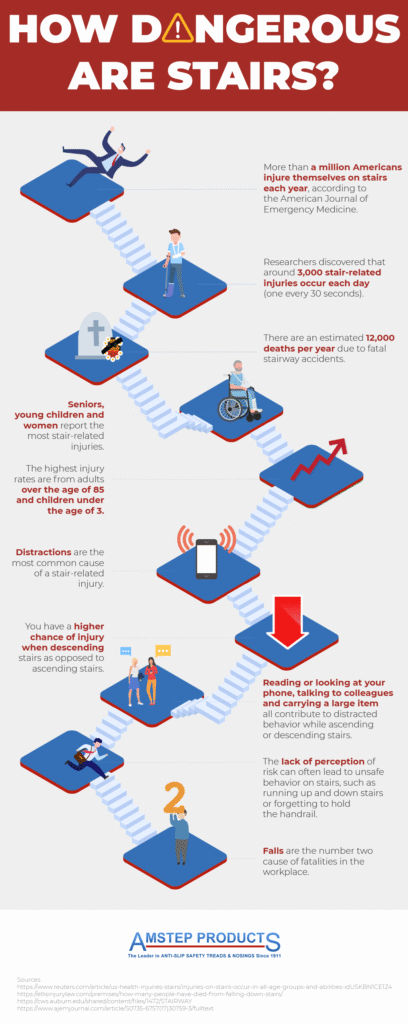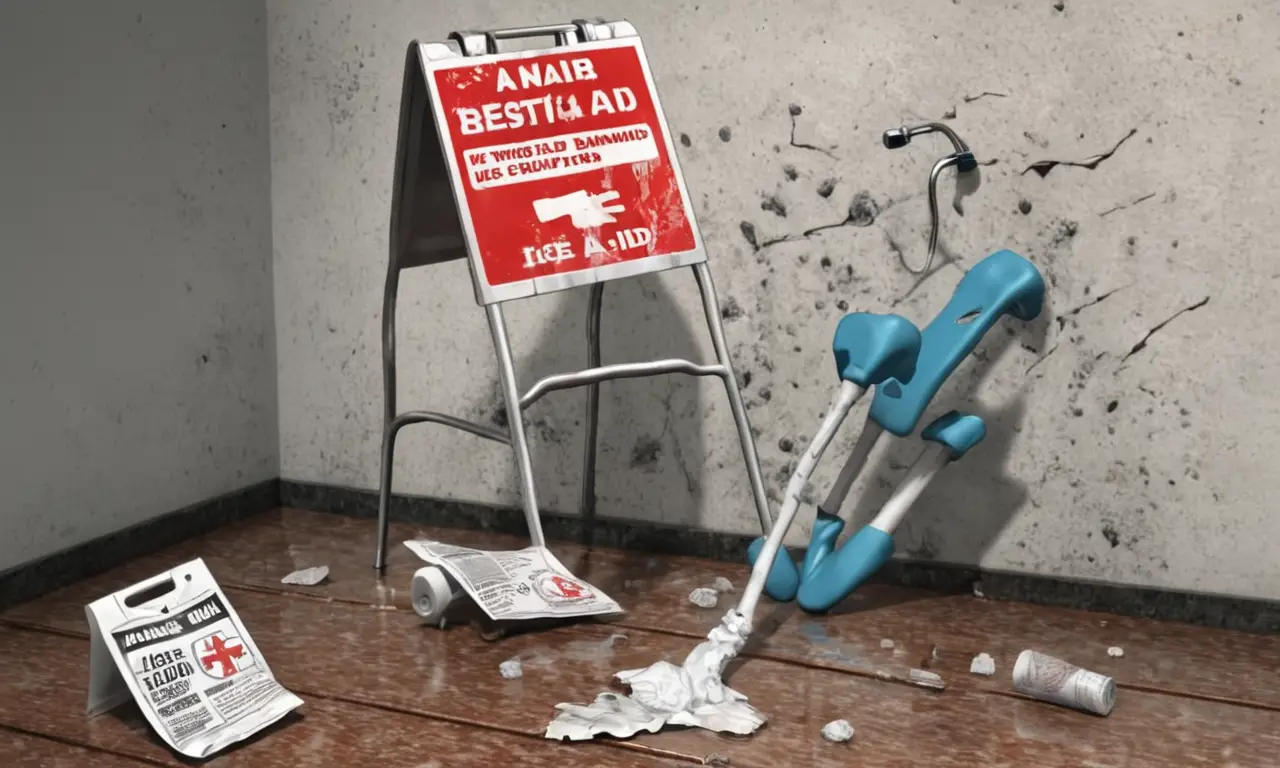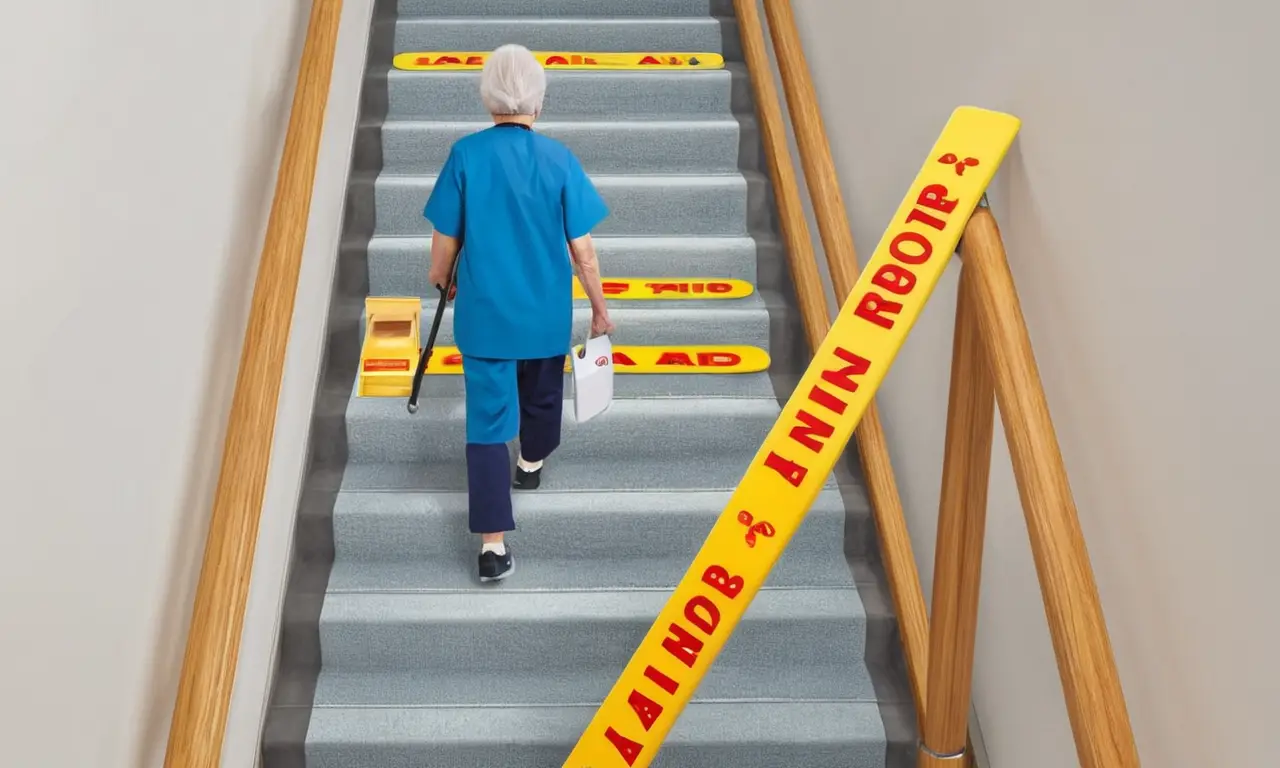
Falling down the stairs is a common household accident that can have serious consequences. While many falls result in minor injuries, others can lead to life-altering trauma. Understanding the potential severity of stair fall injuries and knowing how to prevent them is crucial for maintaining safety at home. This article will delve into the various aspects of stair fall injuries, covering their severity, common types, treatment options, preventive measures, and the importance of seeking immediate medical attention.
This comprehensive guide aims to equip readers with the knowledge necessary to navigate the complexities of stair falls, empowering them to take proactive steps towards preventing accidents and ensuring prompt and appropriate care in case of an incident.
Stair Fall Injuries Severity
The severity of a stair fall injury is determined by several factors, including the height of the fall, the landing surface, and the individual’s age, health, and physical condition. A fall from even a few steps can result in significant injuries, while falls from greater heights carry an increased risk of severe or fatal consequences.
The impact force generated during a stair fall can cause a range of injuries, from minor bruises and sprains to broken bones, head trauma, and spinal cord damage. Individuals with pre-existing medical conditions, such as osteoporosis or arthritis, may be more susceptible to serious injuries from even relatively low falls.
It’s important to remember that the severity of an injury is not always immediately apparent. Some internal injuries may not manifest symptoms until hours or even days after the fall. Therefore, it’s crucial to seek medical attention following any stair fall, regardless of the perceived severity of the injury.
Common Stair Fall Injuries

Stair falls can result in a wide array of injuries, affecting various parts of the body. Some of the most common injuries include:
- Sprains and Strains: These injuries occur when ligaments or tendons are stretched or torn. Ankle sprains are particularly common due to the twisting motion often involved in stair falls.
Fractures: Broken bones are a frequent consequence of stair falls, especially in the legs, arms, hips, and wrists. The force of impact can cause fractures of varying severity, from hairline cracks to complete breaks.
Head Injuries: Falls down stairs can lead to head trauma, ranging from mild concussions to severe brain injuries. The impact with the ground or stair steps can cause bleeding in the brain, skull fractures, and other life-threatening complications.
- Spinal Cord Injuries: In severe cases, a stair fall can result in damage to the spinal cord, leading to paralysis or loss of sensation. These injuries are often associated with falls from significant heights.
Treatment for Stair Fall Injuries
Treatment for stair fall injuries depends on the severity and type of injury sustained. Minor injuries, such as sprains and bruises, may only require rest, ice, compression, and elevation (RICE) therapy. However, more serious injuries, like fractures or head trauma, necessitate immediate medical attention.
- Fractures: Treatment for fractures typically involves immobilization using casts, splints, or braces to allow the bone to heal properly. In some cases, surgery may be required to repair broken bones.
Head Injuries: Head injuries require careful evaluation by a medical professional. Concussions often resolve on their own with rest and symptom management, while more severe head injuries may necessitate hospitalization and specialized treatment.
Spinal Cord Injuries: These injuries are complex and require immediate medical intervention. Treatment may involve surgery, medication, physical therapy, and rehabilitation to minimize damage and maximize recovery.
Preventing Stair Falls

Preventing stair falls is crucial for maintaining safety at home. Implementing the following preventive measures can significantly reduce the risk of accidents:
- Install Handrails: Secure handrails on both sides of staircases provide support and stability, reducing the likelihood of losing balance. Ensure handrails are sturdy and installed at a comfortable height.
Keep Stairs Clear: Remove clutter, rugs, and obstacles from stairways to prevent tripping hazards. Regularly inspect stairs for loose steps or uneven surfaces and address any issues promptly.
Adequate Lighting: Ensure adequate lighting on staircases, both during the day and at night. Install motion-sensor lights or keep a nightlight nearby to illuminate the stairs when needed.
- Non-Slip Surfaces: Consider using non-slip treads or mats on stair steps to improve traction and reduce the risk of slipping.
Seeking Medical Attention After a Fall
It is crucial to seek immediate medical attention after any fall down the stairs, regardless of the perceived severity of the injury. Even seemingly minor falls can result in internal injuries that may not be immediately apparent.
Prompt medical evaluation allows for early detection and treatment of potential complications, minimizing long-term consequences. Medical professionals can assess the extent of the injury, provide necessary pain relief, and recommend appropriate follow-up care.
Conclusion
Stair fall injuries can range from minor to life-threatening, emphasizing the importance of prevention and prompt medical attention. Understanding the severity of potential injuries, common types of stair fall accidents, and effective treatment options empowers individuals to take proactive steps towards safety. By implementing preventive measures, maintaining a safe home environment, and seeking immediate medical care after any fall, we can significantly reduce the risk of serious consequences associated with stair falls.
